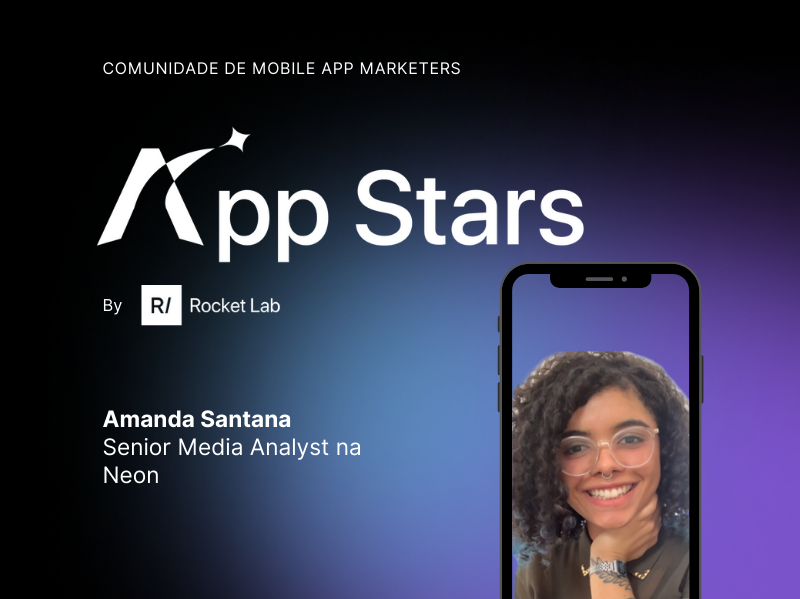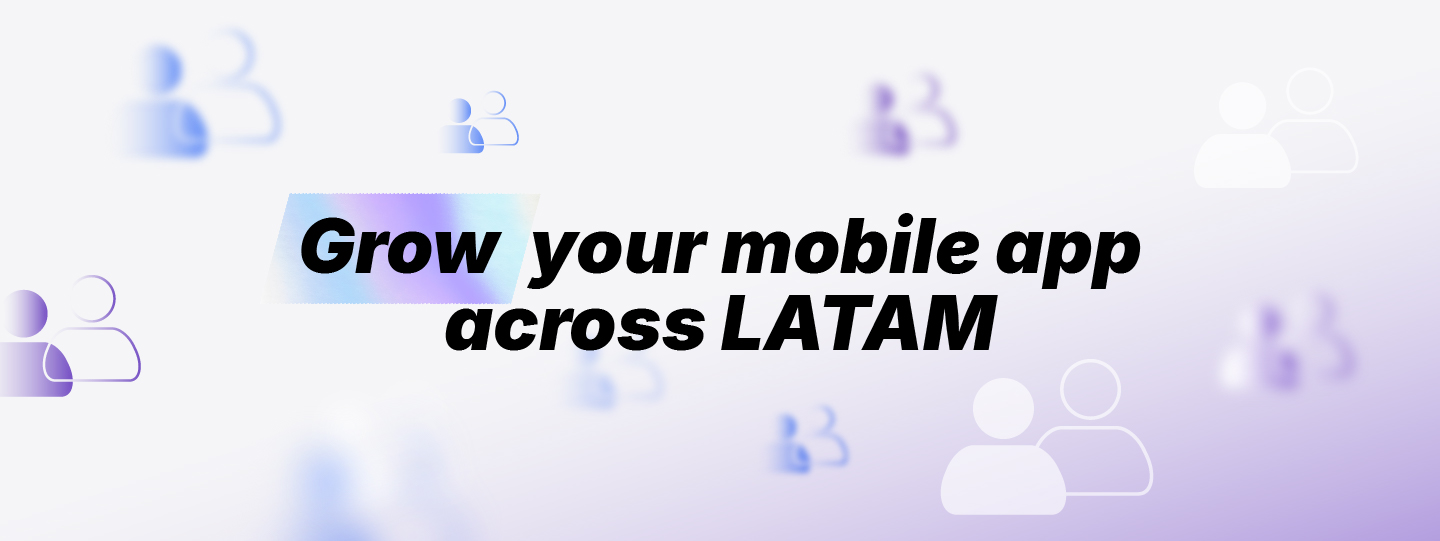
I have a degree in Marketing and did post-graduate work in Marketing as well. I am a great enthusiast of the discipline, I love it. I started in the app world in my first job, in a big financial institution.
I've always worked in finance, so since the beginning of my career, my whole background has been in finance and app campaigns, which are the areas where I have the most depth and authority to contribute.
It's nice to be in the same area for a long time because you can compare places and understand the differences not only in the product but in the market as well. In terms of the app, you can look at the user journey and behavior, making these connections that I believe are very valuable. I give a lot of importance to this unique experience in finance because of this.
I think I arrived at a moment where everyone wanted to have an app, it was something strategic and was the future, and then I saw an opposite movement, focusing more on web strategies that had more formats. It was great to be able to see these contrasts of the two moments.
Something very characteristic when I started in this world of apps was a general lack of knowledge about the strategies, because app campaigns are very automated, they don't allow you to make many manual adjustments, and it's a great reliance on machine learning. I think people still didn't have this notion of "leaving it to the algorithm".
Then I could see how much the industry advanced from thinking that the media professional had to be ahead of the tools all the time to how now being a media professional is something strategic, you need to have a deep view and knowledge of the possibilities of digital strategy, and also be able to look at the product, use creativity, and propose strategies looking from the inside out. This is a much more challenging and fun role, and I like it better.
Thinking about my role at Neon, I am a media strategist very focused on performance for new user acquisition here at Neon. Today I no longer work with re-engagement or monetization strategies.
From my day-to-day, what has been the coolest is to follow and compare how our metrics are in terms of new users and user activity versus other players, I like to use data sources like App Annie for example, to have visibility and make this comparison, follow the results that the players disclose, the number of assets they have, how much is the cost of user acquisition. This thing of always comparing, benchmarking, and understanding how we can improve is super cool and is part of my day-to-day life.
Having gone through different financial companies, what is very common among all of them is that the qualified user is the user that will consider you as their primary account, this concept of "primary bank account".
So for finance, a qualified user is the one who transacts with you, who will use your card, who will put the money in the account to do their day-to-day transactions.
As I said, to be the one who considers you as their primary bank account. The user will pay their bills with your application, if they need to get a loan it will be with you, if they need to invest it will also be with you, so in parallel with the qualified user it is necessary to have off-the-shelf completeness. If you don't have a complete product, user banking will be incomplete. This product shelf for individuals needs to be diversified and complete for the user to be of quality as well, so I see it as a two-way street.
The main point that I see as a deficiency in some places I've worked and in the exchanges I have with other media professionals is that strategies in general are very focused on acquisition, so you see a disproportionate amount of budget and effort being put into bringing in users, but not as much effort and appreciation in retention and engagement strategies. This creates a funnel that is a little bit stale, because, at the end of the day, you bring in several users who are then gone because you don't have always-on strategies in place, trying to show your differentials and win these users over.
The financial industry, for example, is a very complex, heavy, bureaucratic subject, with many acronyms, details, and particularities, and people already have a natural distrust of "if it is a bank, it steals money". All this exists in the collective imagination.
For a company to differentiate itself and manage to have a strategy to transform these prospects into qualified users, it is necessary to have this close conversation that does not just start from acquisition and bringing more and more people, keeping in touch, and using non-paid channels, which I think are great for this.
An email marketing campaign that you do, a nice content that is posted on social networks, when the person has a doubt or insecurity, they will seek reliable sources that talk about that topic, and those who surf this wave can benefit very well from this.
I like programmatic and I had the opportunity to run a really interesting project with a programmatic tool from a big partner, using a server. The intention was to trace the journey from visualization, to look at the path to conversion, what was the size and how many touch points, and what happens to these people, so the ad server ended up adding a lot in these kinds of measurements, it brought a lot of insights and rich data.
At the same time, there was a very big implementation effort, and doing this for apps is even more difficult because these click and impression trackers in general need to be either inside your HTML or embedded in your URL, it's not something simple to make operationally feasible, so it was very challenging.
Another issue was the integration of this programmatic partner with my app tracker at the time, there was still no very clear documentation on how to do this integration, and how we could measure this, and in a performance operation without measurement, there is no way to start.
This process of unraveling and understanding how we would do this integration was very challenging, and we discovered something very rich proven by the data, that is, the importance of programmatic media in the consideration as assistance media, to build frequency and a story in the minds of users.
These assistive media play a very important role in fomenting demand for the apps and generating clarity, even more so for brands that are not so well known, and that still depend a lot on paid efforts, so it is important to make use of this type of technology to measure and have more clarity.
My main source of updates is the newsletters, it's the best content because in the end it's always a summary of a larger article that you find in a blog that explains all the details, so it's rich and complete. I follow more or less 8 or 9 newsletters and some blogs (for example: Appsflyer, Mobile Growth News, Social Media Today).
I enjoy the events, like the recent Google Marketing Live, which talked a lot about the release of new products, but also brought a lot about what is changing in the industry, these privacy issues that will change the way we measure our results and as people who work with Digital Marketing, we will have to reinvent ourselves. I love to consume this content and stay tuned to the events, they are the best sources of information.
As for personal characteristics, to do well in Digital Marketing you need to be curious and tireless, because things change so fast, and you have to like technology a lot.
The "beta" mentality in my opinion is what differentiates people with strategies that are big and structured from companies that never take risks and never want to test anything, they are afraid to change anything.
It takes a culture of testing and an open mind to test everything possible, a lot of curiosity and interest in technology. On the technical side, applications bring a complexity of measurement that those who were used to the web will need to adapt because it is something with greater complexity.
We must also respect the users' data restrictions, and know how to use deep links for a more fluid user journey and better conversion rates. And also have a fair attribution. It is common for attribution, re-attribution, and inactivity windows to come as default from app trackers, and many times there is no structured study or careful observation of aligning attribution windows to what is important for your company and vertical, to reflect your product's journey rather than the industry standard.
Something that I didn't do and that came with time and helped me a lot is when benchmarking, don't just look at your competitors and your vertical, look at different things. You will get very different ideas that will apply to your scenario, for sure.
It's very interesting to look beyond what is already happening in your ecosystem. It is a way to identify opportunities that were not mapped out, this is something I didn't do in the beginning, and now I do it a lot. It helps me to propose different things, and tests, in short, to make this cross-industry comparison.
.png)
Published Dec, 23, 2025
